I’m happy to have Tio Wally (long-time Me So Hungry reader) aboard to send in his eating adventures from across America. Here he is in Galena, Missouri.

Greetings from Galena, Missouri
N 36° 47.079’ W 093° 30.350’ Elev. 885 ft.
One of the tastier rites of spring here is the appearance of Morel Mushrooms. Easily their greatest attribute is that, unlike many other wild mushrooms, its appearance is so distinctive in it’s pine tree-like profile that it’s readily identified by even the most inept, brain-dead psuedo-mycologist, like myself.
There are two types of Real Morels, black and yellow (blonde). The ones growing here are predominately the yellow variety, although the color of the cap may vary from pale yellow to dark gray; the gray ones are immature. They appear in the spring as if by magic, seemingly sprouting up all at once overnight as soon as soil and weather conditions are just right.
According to Wiki, Morels have been called by many local names: Sponge Mushrooms; Dryland Fish, because when sliced lengthwise then breaded and fried, their outline resembles the shape of a fish; Hickory Chickens, in Kentucky; Merkels or Miracles, based on a story of how a mountain family was saved from starvation by eating morels; and in parts of West Virginia, Molly Moochers. (There is no explaining West Virginia.) Here in the Ozarks they call them Morels. Go figure?!
The proper way to harvest Morels is to break the stem off at ground level, then turn the mushroom upside down and gently shake it. Shaking it releases any free spores lurking in the honeycomb-looking folds of its cap. Because the spores are microscopic in size you won’t see them, unless of course you’re equipped with superhuman eyesight.
After you bring your bounty home, slice the mushrooms lengthwise and soak them in salt water for at least a couple of hours. This will kill all the little critters that like to dwell in the folds of the cap. Most of the bugs will float free after you callously administer the salt-water eviction notice/death penalty. Any hangers-on, as well as any hidden dirt and grit, will be removed upon gently rinsing the mushrooms thoroughly.
It seems everyone hereabouts has their favorite way to prepare Morels, ranging from sautéed in butter and garlic to deep frying in an egg-wash-and-cracker-crumb batter to simply mixing them into scrambled eggs. Because I love sautéed mushrooms we went that route and served them over the Duke of Earl’s famous smoked pork loin roast.
I really like the texture of Morels as they are “meatier†than the average mushroom due to their odd-ball construction. I can’t think of another mushroom that’s similar in this somewhat rubbery regard. Other mushrooms are, for lack of a better descriptor, much “airier†than the spongy Morel. And try as they might I don’t think even the mightiest Portobello can match it texture-wise.
A great thing about cooking with Morels is that they give up a lot of moisture, even when well-drained and towel dried. As a result, when sautéed, they essentially make their own gravy.
Needless to say the Morels were a delicious accompaniment. Better still, they were free for the taking and, still better yet, no one died during the harvesting, preparing and consuming of the delectable fungi.
Another wonderful thing about Morels is they are easy to preserve, either by drying/dehydrating, canning and/or freezing. The problem, of course, is having enough to make it worthwhile — if you don’t get them as soon as they come up, somebody else will; calling them “coveted†around here is a gross understatement.
As with all wild mushrooms, make sure you have precisely, unquestionably, identified them well-above-and-beyond certainty before eating them. Many mushrooms are poisonous enough to kill you or, at the very least, make you wish you were dead. If you’re not absolutely, positively, 100 percent sure about a wild mushroom, follow this simple rule of thumb: Don’t Eat It!
And when harvesting Morels beware, there is indeed a False Morel mushroom that looks mildly similar. It is easily identified, however, as it won’t have the tell-tale hollow, tuberous stalk like a True Morel. (I don’t know if they even grow around here; I’ve never seen them nor heard mention of them.)
’Til next time, I bid you “Happy ’shroom hunting†and, should you be fortunate enough to find some Morels, “Enjoy your Morchella esculenta.â€
And so we roll.
Tio Wally pilots the 75-foot, 40-ton(max) land yacht SS Me So Hungry. He reports on road food from around the country whenever parking and InterTube connections permit.

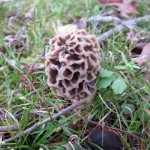

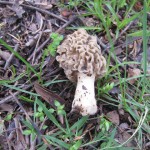




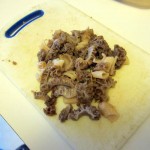



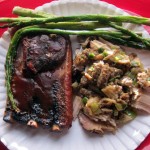

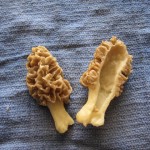
ewrhtrkejtge77
Hi Wally,
When loonda & I lived on Fillmore these tasty treats would come up in our backyard every year. Usually enough for a couple ‘o plates full for each of us. That is, every year until a couple of landscapers moved in upstairs and, as part of their “backyard makeover program” (or should I say “backyard makeover pogrom”), sterilized the entire yard! Those rake-wielding bastards!